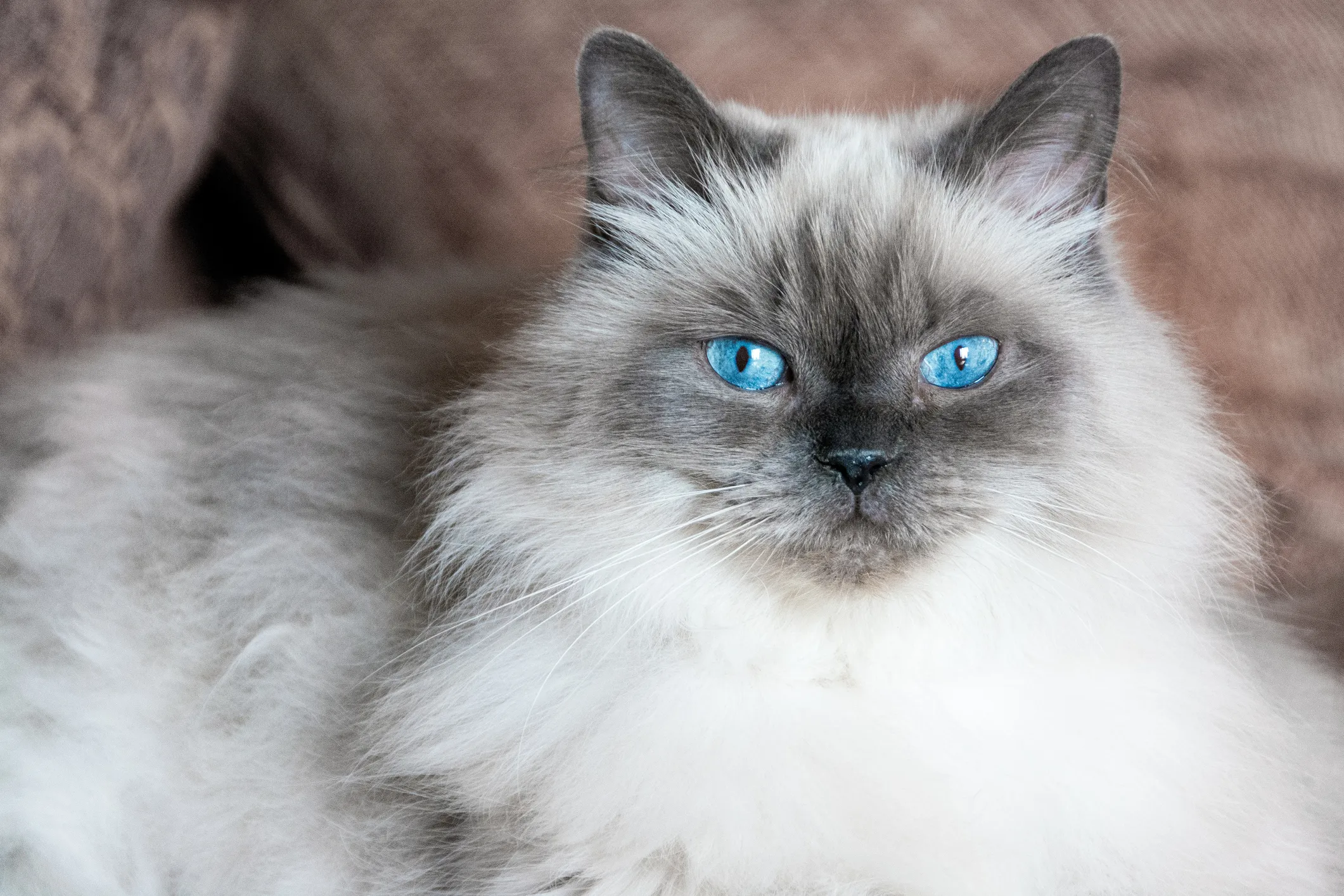
Breed Characteristics
About Himalayan
The Himalayan cat is a striking and affectionate breed known for its combination of Persian body type and Siamese color-point pattern. They have a medium-to-large, sturdy build, with long, thick fur that requires daily grooming to prevent mats and tangles. Their most distinctive features are their blue almond-shaped eyes and color points on the face, ears, paws, and tail, which contrast beautifully with their lighter body color. Temperament-wise, Himalayans are gentle, calm, and affectionate, making them excellent companions for households that appreciate a laid-back and loving pet. They enjoy interactive play in short bursts but primarily prefer lounging in quiet, cozy spots. Despite their calm nature, they can be playful and curious, forming strong bonds with their owners. Due to their long fur and flat faces, Himalayans require regular grooming, a balanced diet, and proper health care to maintain their luxurious coat and overall well-being. They thrive in peaceful environments and are best suited for owners who can dedicate time to both care and companionship.
Himalayan
Available Colors
Recommended Diet
What to Avoid
For Himalayan cats, it is important to avoid certain foods and substances that can negatively affect their health. Toxic foods such as chocolate, onions, garlic, grapes, and raisins should never be given, as they can cause serious digestive upset or poisoning. Dairy products should also be avoided since many cats are lactose intolerant, leading to stomach issues. Raw meat or fish carries the risk of harmful bacteria or parasites and should be handled with extreme care or avoided altogether. Additionally, excessive treats can contribute to obesity, particularly because Himalayans tend to have a lower activity level. High-carbohydrate or low-quality filler foods should also be avoided, as they do not support coat health and may lead to weight gain. Overall, feeding a high-quality, balanced diet tailored to long-haired, moderately active cats is essential for keeping a Himalayan healthy and thriving.